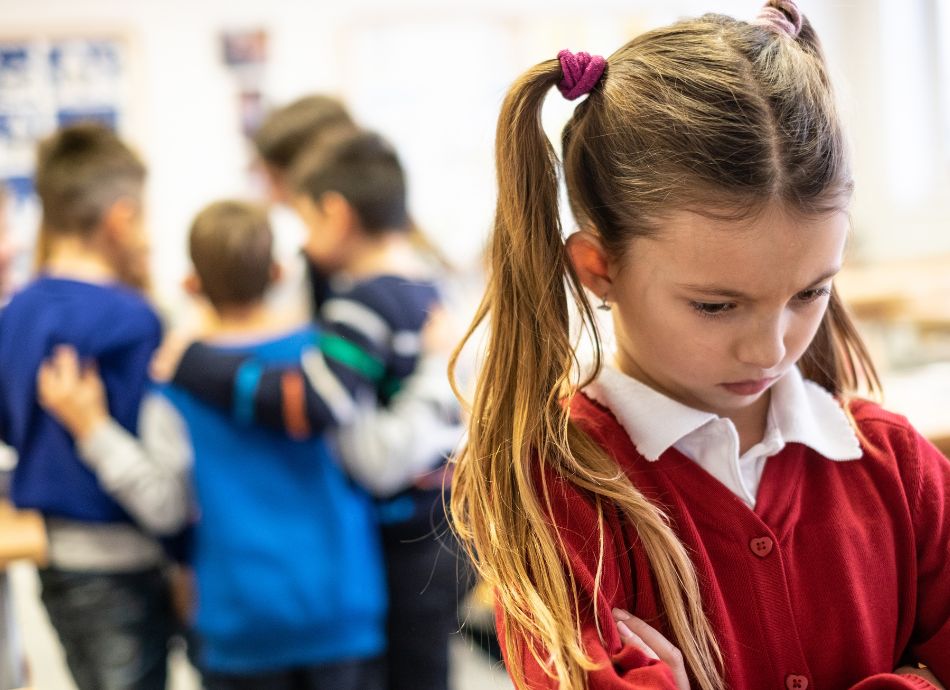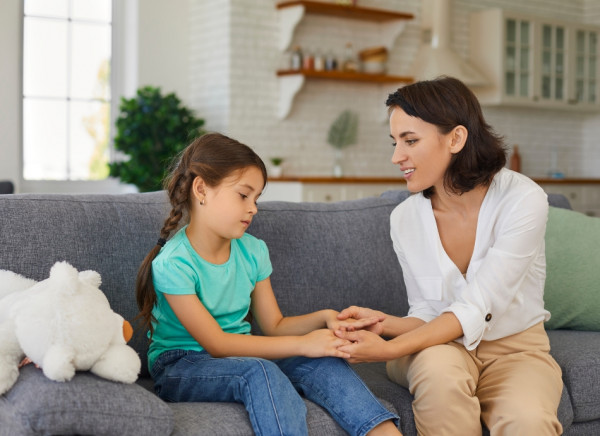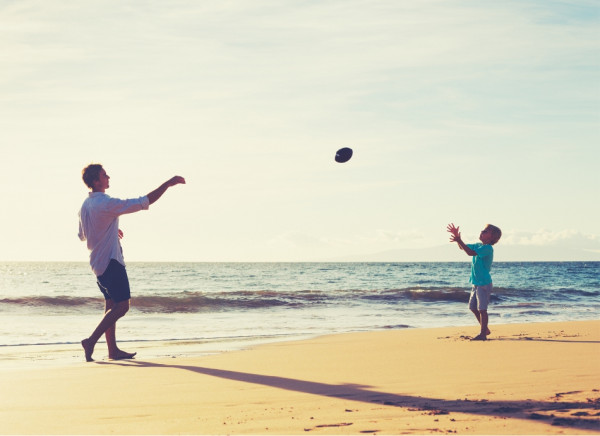Wishing everyone a safe and happy Christmas and New Year – Meri Kirihimete from the Healthify team.
Bullying in children and teens
When your child or teenager is being bullied or bullies others
Key points about bullying
- Bullying is never OK. All bullying is hurtful.
- When it keeps going, it can have a serious impact on a child or young adult's emotional wellbeing.
- If children are being bullied or bullying others you need to step in.
- Work with the school or organisation where the bullying is taking place.
- Stay calm, listen to the facts and make notes about what happened and when.
- Reassure your child you want to help and support them.
- This page also has information if your child bullies others.

Bullying refers to repeated episodes of abuse between people from the same age group where an imbalance of power makes it difficult for the victims to defend themselves.
Bullying takes many forms. It can be:
- physical – hitting, kicking, punching, shoving, tripping, taking or damaging belongings, or making someone afraid of being hurt
- verbal – name calling, saying nasty things, making fun of someone, threats, writing mean things, leaving unkind notes
- social – leaving them out of activities, spreading rumours or personal information, embarrassing them, telling lies about them, not sitting next to them in class or at lunch
- cyberbullying – bullying online, via the internet, mobile phones and social media. Read more about online bullying and how to deal with it.
Bullying is a relationship problem
Bullying is common worldwide among children and young people. All sorts of people can be targeted, and for many reasons – even just standing out as being different from their peers can make a child a target. This can include things like how they look, what they believe, or how they perform in school.
Sometimes, kids who bully are struggling themselves. They might not be getting enough attention, feel powerless, or lack love in their own lives. Bullying can be a way for them to feel strong and in control, even if it hurts others. They often don't understand the pain they cause. Sometimes, those who bully may also be victims of bullying themselves.
Bullying is repetitive behaviour
While children can be unkind or insensitive at times, bullying has specific features which make it more serious and harmful. Bullying is when a child is targeted again and again – it's not a one-off event.
Bullying is deliberate
Bullying is usually intentional, which means the person who is bullying knows they're hurting someone. Bullying can be aggressive, harmful behaviour. Because it involves an imbalance of power, it can be difficult for those being bullied to defend themselves.
Bullying is complex
It can be physical, verbal or social. It can be obvious or hidden, so school teachers may be unaware. Verbal and social bullying can be just as harmful as physical bullying. It can also occur across different contexts – although it often occurs at school, it can also take place in the neighbourhood or at home between brothers and sisters.
Bullying is harmful
Some people think bullying is just part of growing up and a way for children to learn to stick up for themselves. But bullying has serious consequences – it can make children feel lonely, unhappy, frightened, unsafe and think that there must be something wrong with them. Sometimes bullying results in physical injury, eg, punches. Bullying can also be linked to mental health problems, in children and young people but also continuing into adulthood. Bullying early in life has also been linked to physical health problems for victims when they become adults.
|
If bullying involves physical threats or aggression and you're worried about your child’s safety, contact police by calling 111 in Aotearoa New Zealand. |
Most bullying behaviour is hidden from adults. Talk to your child about school or social groups if you're worried, or think there might be something 'off' with their usual behaviour.
Children don’t always tell an adult when they're being bullied, so it’s important to look out for changes in their mood or behaviour. After all, you know them best. Talk to them and ask them questions about how things are going for them.
Signs that might indicate younger tamariki are being bullied include:
- changes in mood and behaviour
- tummy aches
- nightmares
- reluctance to go to school or kura
- loss of confidence
- they may lose contact with friends and seem isolated.
Have a look at Bullying-Free New Zealand’s suggestions of what to look out for(external link).
For more information about bullying and younger children, go to KidsHealth NZ.(external link) This page has information and videos to help if your child is being bullied, or if they are bullying others.
Bullying can happen to anyone, anywhere. It could be in a physical place (eg, at a school, sports ground, park, or on the bus) or online, via text message or social media. As most children have access to phones and devices it means they don't often get 'down time' from the bullies they might otherwise only see during school hours.
Signs of being bullied to look out for include:
School behaviour
- Being nervous or grumpy about school.
- Being scared to go to school, wanting to change routes, or often asking for a ride to school.
- Often feeling sick before school.
- Not doing as well at school, getting lower marks than usual.
- Avoiding specific activities, eg, pulling out of sports teams or groups.
At home behaviour
- Coming home hungry, keeps losing things or has missing/damaged belongings.
- Has unexplained bruises, cuts, or scratches.
- Seeming unusually quiet or spends more time alone.
- Appearing down (sad, depressed), insecure, or doesn't appear to have as many friends as usual.
- Talks about harming someone or getting back at someone.
- Refuses to talk to you or say what's wrong.
- Having difficulty sleeping or nightmares – especially on Sundays or at the end of school holidays.
Online behaviour
- Is anxious about using devices, seems upset after using them.
- Hides screens or acts nervously about texts and emails.
- Receives suspicious messages, packages or phone calls.
Remember, these are just signs, and not every child who experiences bullying will show all of them. If you're concerned about a child, talk to them in a safe and supportive way.
It's important to talk to your child if you think they're being bullied. Remember, they might feel scared, confused and worried about the consequences of 'telling on somebody' or getting you involved. Teenagers often prefer to handle things on their own and can get hassled by their mates if mum or dad 'step in'. Bullying can also be really humiliating – many tamariki and rangatahi don't want to be seen as weak, or fear that adults will judge or punish them for not standing up for themselves.
These can be very challenging issues for parents, family and whānau members to address, however it's important to know how important families can be in building resilience in someone who's being bullied. Your relationship with your child will be your biggest asset in doing this.
Try to:
- Encourage: Tell them you want to help and support them, no matter what the problem is
- Stay calm and listen
- Take them seriously: Let them know you're happy they've told you and you believe them
- Reassure: Let them know the bullying isn't their fault
- Act: Ask them what they want to do about it and how you can help. It's important to work with your child or teen to help them find their own solution.
Agree on a plan
Having a plan will give your child confidence and reassure them you're alongside them if the bullying happens again. The most important thing is to let them know how to get help if bullying happens. Make sure you check in with them to see how they are doing and if the plan is working.
Here are some ideas:
- Ignore – try ignoring the bully first. If you don't react, it might make them stop.
- Say no – if ignoring doesn't work, firmly tell the bully to stop.
- Walk away – if they keep going, walk away and find someone safe to be with.
- Know who to tell – decide together who your child can trust and talk to if they're bullied, eg, a parent, teacher, counsellor, or sports coach.
- Talk to friends – encourage your child to tell their friends about the bullying. There's strength in numbers.
- Avoid unsafe places – if there are areas where bullying happens, plan different routes or avoid them.
- Stay with friends – bullies target kids alone. Encourage your child to be with friends at school and outside.
- Find safe activities – help your child find hobbies and activities they enjoy with supportive people.

Image credit: Canva
Next steps and reporting bullying
If your child is being bullied at school, talk to their class teacher, dean or principal. When talking to schools about bullying, be calm and constructive. Be as clear as you can about what's happened and take along any notes you've made with dates, times, incidents you know of.
Most schools will have bullying prevention policies. Ask what steps will be taken, what support is available and what strategies they can use at school and you can use at home. Write down the outcomes of your discussion. Make sure there's someone your child can report any more problems to, and stay in touch with the teacher or staff member.
If you're not happy with the school's response, you can:
- make a written complaint to the board of trustees, or
- contact your local Ministry of Education office(external link), or
- contact Mana Mokopuna – the Children & Young Person's Commission(external link).
In some circumstances, you can take complaints to the police.
Bullying Free NZ has a useful, free booklet called Tackling Bullying – A guide for parents and whānau.(external link)
Online bullying
If your child has been cyberbullied, read more about how to deal with online bullying.
You may find out about your child's behaviour from a teacher, parent or brother or sister. But your child may not admit it or be prepared to talk about it if you ask them.
Some signs that they might be bullying others are if they:
- have money or things that don't belong to them
- talk about others in an aggressive or negative way
- show aggressive or mean behaviour towards other people
- don't show sympathy towards others being bullied
- are often sent to the principal's office or to detention at school.
Displaying these sorts of behaviours doesn't mean your child is bullying somebody, but they may be indicators of bullying or, if not discouraged, may lead to bullying.
Why might they act like this?
Some children may act as bullies if they've been bullied themselves or have seen others being bullied. If they're worried about being bullied they might bully others as a way to avoid being bullied themselves.
Children who bully others may have experienced some sort of stress or trauma, and this is their way of reacting to it.
Learning to assert themselves is part of normal development but if it gets out of control, it can turn into dominance or control of others expressed as physical, verbal or emotional bullying.
If they haven't had positive, caring, sympathetic behaviour modelled for them at home and at school they may not have learned how to behave well towards others.
Many children are capable of bullying at some time and it's important to respond in a helpful, calm manner. Don't get angry or punish them without knowing the full picture. Children who bully need help and support to learn better ways of relating to, or interacting with others.
One of the first things to do is ask yourself if your child is modelling learned behaviour. As early as possible, you should:
- Be a positive role model – act in the way you want your child to behave.
- Praise them when you notice them getting on well with others.
- Build positive behaviour by talking about taking turns, sharing and looking after other people.
- Practise cooperation and team work, play games that involve taking turns, eg, shooting hoops, passing a ball, board games.
- Encourage your child to respect others and accept people's differences.

Image credit: Canva
If your child is a bully or has taken part in bullying:
- Ask – ask them what's going on and listen to their side of the story. Think about any issues or problems they might be having that might be influencing their behaviour, eg, parents splitting up.
- Help them understand – children who bully often need help to understand how their behaviour affects others.
- Explain – talk to them about bullying and why it's not acceptable.
- Reassure – make sure your child understands that while you don't support their bullying behaviour, you do support them.
- Be clear about what you expect – talk to them about better ways of handling situations that upset or frustrate them, or make them act aggressively.
- Talk to the school or organisation and ask how they can help – when you work together, you're more likely to resolve the problem.
Bullying(external link) KidsHealth NZ
Bullying Free NZ(external link)
Bullying, harassment and sexual harm(external link) Community Law (free legal help throughout New Zealand)
Help and advice(external link) Mana Mokopuna Children and Young Person's Commission
Brochures
Tackling Bullying – a guide for parents and whānau(external link) Bullying Free NZ
References
- Tackling Bullying – a guide for parents and whānau(external link) Bullying Free NZ
- Bullying(external link) KidsHealth NZ
- Bullying Free NZ(external link)
- Bullying(external link) Ministry of Education, NZ, 2022
- Children and pre-teens bullying others – what to do(external link) Raising Children, Australia, 2022
- How to tell if your child is a bully(external link) Look Through Their Eyes, US
- Bullying in schools(external link) The Child Psychology Service, NZ
Credits: Healthify editorial team. Healthify is brought to you by Health Navigator Charitable Trust.
Reviewed by: Dr David Chinn, Consultant Child and Adolescent Psychiatrist, ICAFS, MHAIDS, Capital and Coast
Last reviewed:





